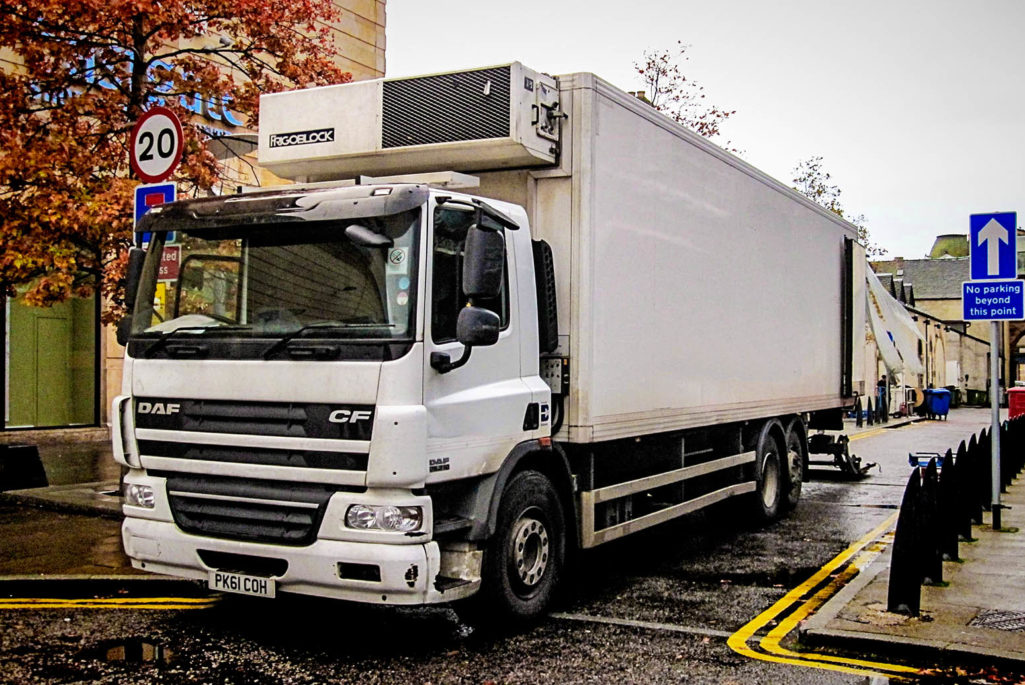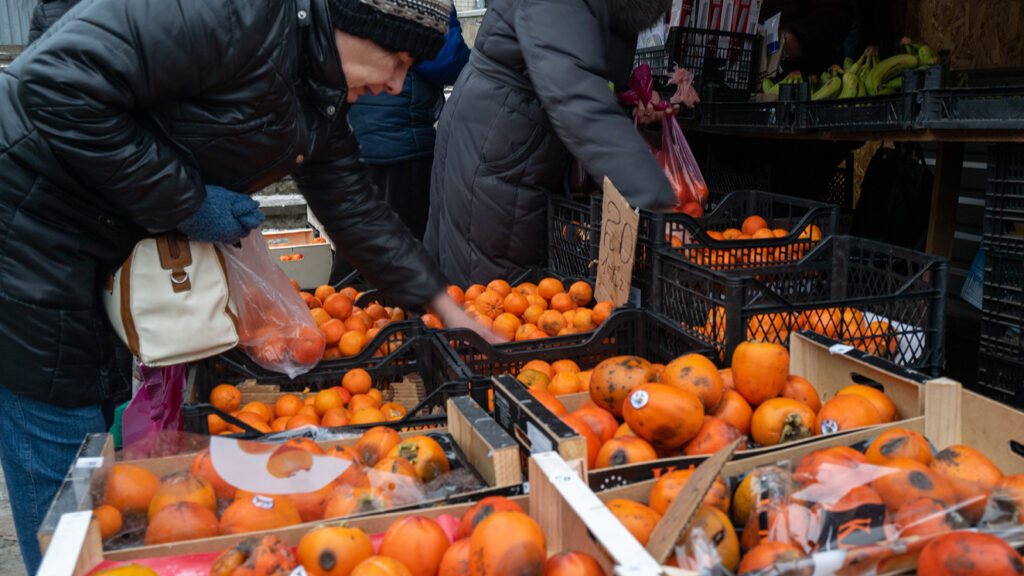Putting the ‘Freeze’ on Food Insecurity

A refrigerated truck in London awaits unloading.
Glen Wallace/Flickr
Consider that about a third of the food we currently produce worldwide never makes it to a market, let alone a mouth.
The question of how to achieve food security often seeks answers in production; vast research budgets are spent attempting to increase yields. Though there is a need to increase food production, doing so will put ever-greater strain on agricultural land and will use more water, fertilizers and pesticides. This approach alone is not a sustainable route to achieving food security.
We must use our resources more efficiently and effectively and focus on reducing waste and loss. And for that, we need more cold.
Cooling food from harvest and initial processing through to storage and distribution not only preserves nutritional value for longer, but also protects food’s economic value. In the west, there is a seamless network of refrigerated processing, storage, distribution and retail that takes food from the farmer’s field to our plates. This cold chain eliminates food loss and ensures that public safety is not compromised. But such coordinated cold chains are not universal. Cold—or to be more precise, the lack of cold—is the Achilles’ heel of the world’s developing economies.
Where cold chains are either nonexistent or incomplete, 200 million tonnes of food are lost every year. The food currently wasted or lost in Africa and Latin America alone could feed 600 million people; meanwhile about 842 million go to bed hungry every night.
And such waste comes at a tremendous price: Globally, the value of the food we grow but never eat is almost $1 trillion, equivalent to about a quarter of the U.S. federal budget. Annually, the amount of water used to produce food that is never eaten could fill Lake Geneva three times. If food loss were a country, it would be the third largest emitter of CO2, after the U.S. and China.
The scale of the challenge is staggering. Post-harvest loss results in a scandalous waste of resources, energy and water, not to mention the waste of food’s nutritional and economic value. The undeniable challenge of our age is how to sustainably feed a population set to reach 10 billion.
We must address post-harvest food loss, and that means thinking seriously about cold.
Warming Up to the Role of Cold
We must address post-harvest food loss, and that means thinking seriously about cold.
China has recognized the essential role of cold in developing food security and a sustainable future. In China, cold storage capacity soared from just 250 million cubic feet to more than 2 billion in only three years, and the country’s cold chain industry is reportedly expanding by 25 percent per year.
In India, there has been significant investment in cold infrastructure. It now has the largest cold storage capacity in the world. Yet India still needs to spend more than $20 billion on cold chain infrastructure, almost 50 percent of which is needed for refrigerated transport—cold in motion. Currently, India has fewer than 10,000 refrigerated trucks, but could need up to 180,000 to meet demand. If food cannot reach market in a good condition, post-harvest loss will persist.
But generating cold is energy intensive, so what of sustainability?
Doing Cold Smarter
The problem with existing cold chain technology is its reliance on outdated, fossil-fueled, inefficient and polluting technology. Some argue that installing new cold infrastructure is worth exploring regardless of the damage it might do. I disagree. We urgently need to leapfrog the dirty, inefficient, fossil-fueled technologies of the past and establish new cold chains built on efficient and environmentally conscious foundations. We need to “do cold smarter.”
Take the modest transport refrigeration unit, the often-overlooked little box on top of refrigerated trucks that provides refrigeration for the vehicle. These are powered by inefficient, polluting diesel engines. These units have never been effectively regulated and can emit 29 times as much particulate matter and six times as much NOx as a modern truck engine.
Analysis suggests that to meet the global demand for cooling, the number of transport refrigeration units on the on the road could reach 15.5 million by 2025—more than four times the number in operation today. Unless we find an alternative to diesel, that growth will bring with it catastrophic pollution. Those 15.5 million transport refrigeration units alone will emit the same amount of particulate matter as up to 450 million diesel trucks.
But these refrigeration units don’t need to be diesel-powered, inefficient or disproportionately polluting. Cold can be clean and sustainable.
The UK’s government has already acted, funding a new Thermal Energy Research Accelerator that will invigorate the search for new, cleaner technologies. It will also help to bring those technologies to market at an affordable price. The EU has also begun to develop its first-ever heating and cooling strategy. Such growth in awareness will help to deliver affordable, accessible and clean cold technologies globally.
One such technology being developed is focused on delivering new, clean cold and power technologies, powered by liquid nitrogen. The first application is undergoing closed-road trials ahead of commercial deployment later this year: a zero-emission transport refrigeration unit that will be cheaper to run than a diesel alternative and much better for the environment.
The vision for this liquid nitrogen-based technology is that one day, from one “tank of cold,” it will be possible to run cold stores, packing facilities and refrigerated vehicles. In other words, a new, zero-emission cold chain. And the infrastructure is already in place. India, for example, has about 3,500 tonnes of spare liquid nitrogen capacity per day. That’s enough to run 29,000 zero-emission transport refrigeration units immediately.
If we consider cold as a system, much as heat is viewed, then there is a vast untapped potential to deliver even greater gains. Take liquefied natural gas: Condensed to a liquid at -160°C, it is gas packaged in cold. When LNG is regasified at import terminals, its “cold packaging” is wasted. Meanwhile, two miles down the road at a cold warehouse, diesel is burned to generate cold. Where is the sense in that? LNG operations in just 10 EU countries dump enough “waste cold” to create 27,000 tonnes of extremely cheap liquid nitrogen per day—enough to run about 211,000 liquid nitrogen transport refrigeration units.
There is huge potential for a new “cold economy” to emerge, which will bring with it a range of cutting-edge technologies, resource-efficient systems and innovative services. But right now, we have the technologies and responsibility to sustainably reduce post-harvest loss, to support farming communities and protect the environment.
By making considered choices and thinking beyond “business as usual” reactionary methods, we can make the world a cleaner, cooler, more sustainable place.






